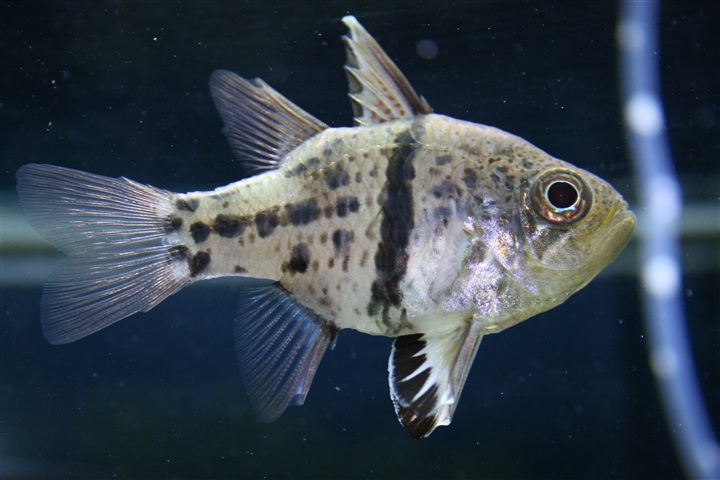Sphaeramia orbicularis

| Latin name | Sphaeramia orbicularis - (Cuvier, 1828) |
|---|---|
| Local name | Orbiculate cardinalfish |
| Family | Apogonidae - Sphaeramia |
| Origin | East Indian Ocean, West Indian Ocean, Australia, Japan, The Red Sea, Indonesia, Central/West Pacific |
| Max length | 10 cm (3.9") |
| Minimum volume |
100 l (26 gal) |
|---|---|
| Hardiness |
Hardy |
| Suitable for aquarium |
Suitable for most aquarium |
| Reef safe |
Reef safe with caution |
| Aggressiveness | Docile |
| Recommended |
Small crustaceans (Krill, mysis, artemia...) Zooplankton (Cyclops, pods...) |
|---|---|
| Mostly |
Larger crustaceans (Shrimp, crabs...) |
This spicies might be a threat to smaller fishes.
This species can be a threat towards small crustaceans, e.g. small shrimp.
This species can be kept in a small tank, if it is specifically equipped to meet its needs.
It is recommended however, to keep it in an aquarium which is larger then described above.
This species ought to be kept in a group of at least three.
The male incubates the eggs in its mouth.
This species needs good hiding places, for example, between live rocks.
This species is very shy and docile, so one should be careful when keeping it with more aggressive fish.
This species can be bred in captivity, one can therefore consider asking your local fish store for a captive bred specimen.
Cardinalfish come in many different shapes and colours, generally they are well suited for aquaria.
Cardinalfish have a large mouth and a big appetite, take this into account with feeding the other fish. These fish typically live off of Artemia, Mysis and krill. In the aquarium they will eat anything they can.
They will sometimes eat small shrimps and fish, so do be aware of this, but it is not normally a problem.
It is possible to keep several species together, if space allows. Some species will form small shoals. They are normally peaceful towards other fish, but will sometimes fight among themselves if there isn't sufficient space or food.
Many species are nocturnal and will therefore often seek a hiding place during the day. This can be between stones, SPS corals and, in some cases, in an anemone and between spines of Sea urchins.
Cardinalfish are a good choice if ones wishes to attempt to start a breeding tank.
| Distribution | Indo-Pacific: East Africa to Kiribati, north to the Ryukyu Islands, south to New Caledonia; Belau to eastern Caroline and Mariana Islands in Micronesia. |
|---|---|
| English common names |
Orbiculate cardinalfish Polka-dot cardinalfish |
Scott W. Michael. 2001. Basslets, Dottybacks & Hawkfishes: v. 2 (Reef Fishes) - TFH Publications / Microcosm Ltd. - (English)
Bob Fenner. Cardinalfishes, Family Apogonidae, Pt. 1, Pt. 2 - Wet Web Media - (English)

